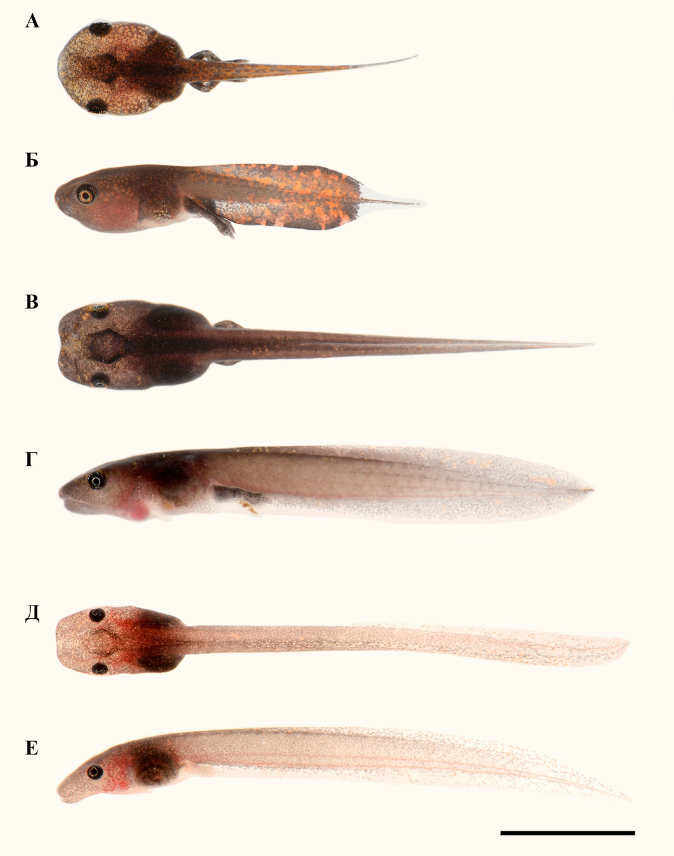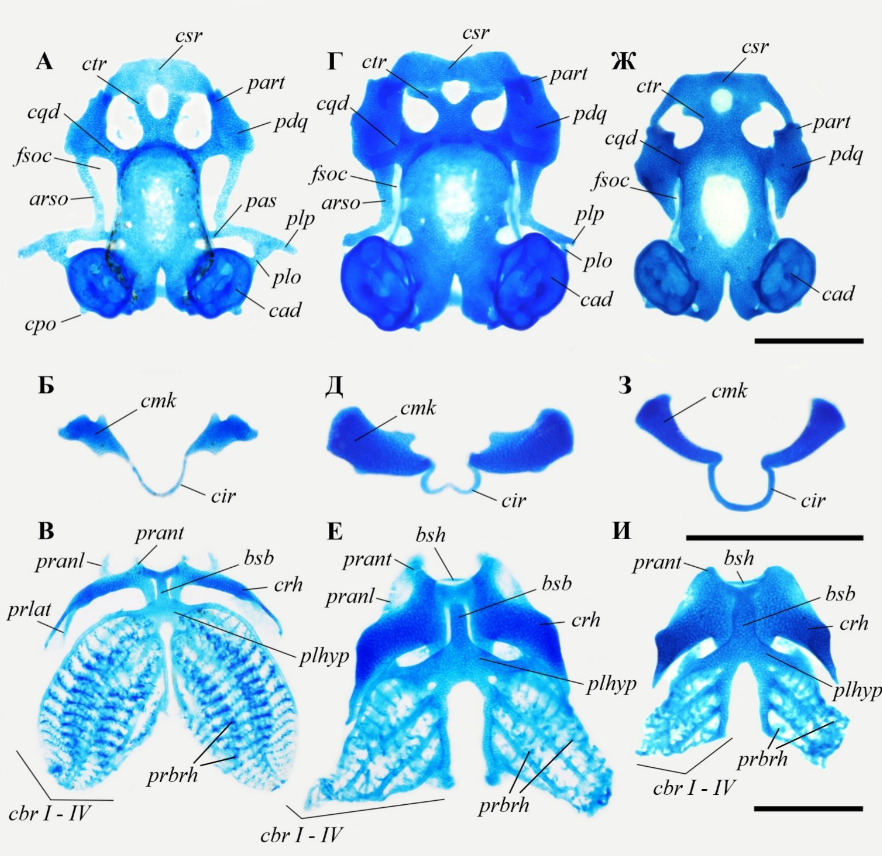
In 2023, the journal Vertebrate Zoology published an article by Anna Vasilyeva, an employee of the Institute of Ecology and Evolution of the Russian Academy of Sciences (co-authored with Nguyen Thi Van), devoted to the evolution of the larvae of tropical frogs that switched to reproduction in arboreal microreservoirs - phytotelmata.
The use of phytotelmata for breeding is widespread among amphibians living in complex tropical ecosystems. On one hand, this strategy allows developing tadpoles to avoid dense interspecific competition and predation pressure. On the other hand, in closed microreservoirs, tadpoles face a lack of food resources. One way to overcome these limitations is oophagy, that is, “egg cannibalism” - feeding on eggs of the same species of frogs to which the tadpoles themselves belong.
Larval oophagy is common in many families of frogs whose tadpoles are generally prone to predation (e.g. Hylidae, Leptodactylidae, Rhacophoridae, etc.). However, it is much more surprising for the family of narrowmouths (Microhylidae), whose very specialized tadpoles are adapted to filter small organisms or organic particles from water. The transition from microfiltration to macrophagy and its special case, oophagy, is a complex evolutionary task that requires significant morphological changes in the oral apparatus, gill apparatus (which acts as a filtering structure) and the digestive system.
An excellent model for studying this evolutionary transition were the tadpoles of three closely related, very similar species of frogs of the genus Kalophrynus, one of which (K. interlineatus) lives in small still water puddles and is a microfilter, and the other two develop in phytotelms - large water-filled tree hollows (K. honbaensis) and hollow bamboo stems (K. cryptophonus) and are obligate oophages.
The gradual transition from open reservoirs to voluminous cavities holding up to several liters of water in tree trunks and logs and to narrow gaps in bamboo internodes with a volume of only 20-50 ml in the series of tadpoles K. interlineatus - K. honbaensis - K. cryptophonus is accompanied by noticeable external changes : flattening of the body, elongation of the tail and reduction of the fins (Fig. 1), which facilitates locomotion in the phytotelm viscous from mucus.

The transition from feeding on small organisms and organic particles suspended in water to the absorption of whole eggs - a relatively large, nutrient-rich food - leads to a progressive shortening of the digestive tract and the appearance of a voluminous stomach. In addition, the change in trophic adaptations is accompanied in the same series of tadpoles by an expressive transformation of the cartilaginous larval skeleton (Fig. 2): the skull loses the wide lateral processes (prlat), characteristic of microfilter tadpoles; the posterior part of the palatoquadrate cartilage (pdq) is successively reduced; the weak, thread-like lower labial cartilage (cir) becomes more powerful, adapted to capture larger food; the gill apparatus increasingly loses its filtering functions: the openwork gill basket (cbr I-IV) is gradually reduced, the hyobranchium as a whole becomes more robust, adapted for more powerful suction.
The results obtained clearly show how the adaptive evolution of tadpoles occurs as they develop new ecological niches in tropical ecosystems, and how the larvae of closely related frog species acquire greater morphological diversity than adults.
The study was carried out on the basis of the Joint Russian-Vietnamese Research and Technology Center.
Publication imprint:
Vassilieva A.B., Nguyen T.V. (2023) Restricting living space: Development and larval morphology in sticky frogs (Microhylidae: Kalophrynus) with different reproductive modes. Vertebrate Zoology 73: 367-382. https://doi.org/10.3897/vz.73.e98618
